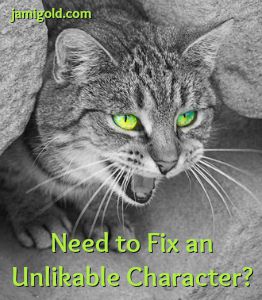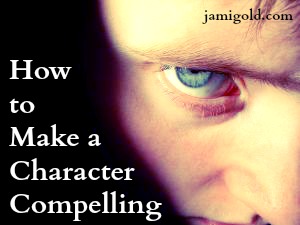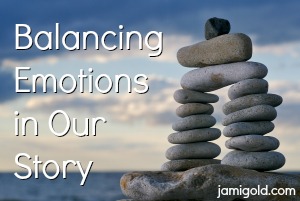How are villains, character likability, subtext, and point-of-view all related? In many stories, our antagonist is a non-POV character, and for non-POV characters, my previous tips about likability will be limited to subtext. So even though we might not be trying to make our villain likable, we might struggle to make them layered.
Pin It
Read More
In writing, it’s difficult to balance “not enough” and “too much.” Not enough flaws can make our characters flat, and too many flaws can make our characters unlikable. Some genres can get away with unlikable characters, but for those stories that can’t, here are 3 1/2 tips to fix the problem.
Pin It
Read More
Internal dialogue is rarely discussed but can be the key to a great story. The skillful use of internal dialogue reveals a story’s emotions, characterizations, motivations, and overall arc. Internal dialogue provides context for everything our characters experience, which helps our readers know what the story means to our characters.
Pin It
Read More
If you’re anything like me, you might have a love/hate relationship with revisions. I love seeing my story strengthen and improve, but I hate the struggle. Today my guest poster is sharing a worksheet to help us find the important aspects of each scene so we can revise without tears.
Pin It
Read More
When it comes to learning about point of view and how to avoid issues like head-hopping, it doesn’t help that half the information out there is confusing and contradictory. Let’s take a closer look at how we can find and fix these issues.
Pin It
Read More
Probably no one can claim to be an expert at making sure the cool character in our head makes it onto the page. We can only guess at how readers will interpret what we tell them. Advice can help us share our brain with our readers as much as possible, but the process will never—ever—be completely clean.
Pin It
Read More
There’s no shortage of blog posts about what makes characters likable to readers. Yet readers still read and enjoy stories with unlikable characters. Why? Let’s take a look at what options we have for creating characters that compel readers to keep turning pages.
Pin It
Read More
When we first start learning about writing, we’re often faced with a whole new language. Words like “beats,” “tension,” and “conflict” take on new meaning within the writing world. Such it is with the words “needs” and “goals.” Once we enter the writing world, those words become infused with extra meanings related to plots and character arcs.
Pin It
Read More
We usually want to keep the reader immersed in the story and keep readers’ interest by engaging their emotions. But when we understand the psychology driving emotions, we might be able to make those emotions more realistic or recognize when there’s a disconnect on a character’s emotional journey.
Pin It
Read More
The ability to manipulate our readers’ emotions is a good thing (as screwed up as that sounds). Storytelling and keeping readers’ interest often comes down to creating emotions in our readers. So let’s take a closer look at how we create emotions in our readers and how we find the right balance.
Pin It
Read More










